- solen.cz - Osteoarthritis
- wikipedia.cz - Osteoarthritis
- solen.cz - Natural substances in dietary supplements and their role in osteoarthritis
- liečbaklbov.sk - Treatment of joints. About stem cells
Stop arthritis: how to live with arthritis and how to treat it?
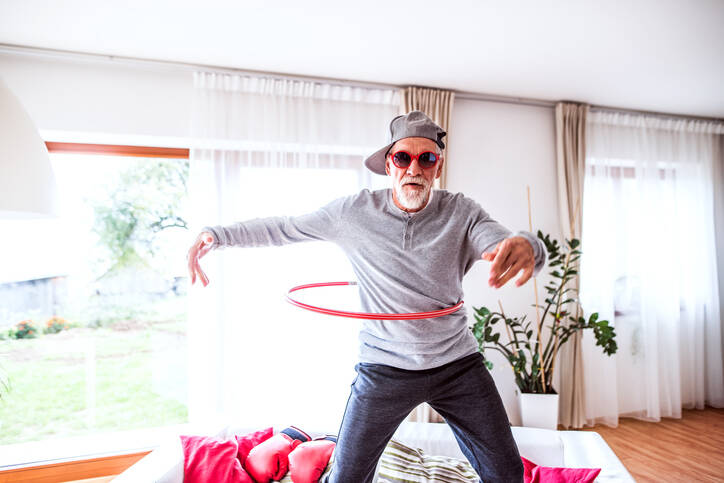
Arthritis is only a fraction of musculoskeletal disorders. However, due to the increasing tendency of elderly patients, we are encountering it more and more often. It is a degenerative disease of the articular cartilage affecting the hands and feet or the spine. This degenerative process has various causes, but most often it is caused by aging. Aging is an irreversible process, which was short-lived by alchemists of the past, but also by today's medicine. However, it is possible to alleviate its symptoms to some extent and thus make the life of an arthritis patient more fulfilling. How to do it?
Article content
Osteoarthritis affects approximately 15% of the general population.
It occurs in middle-aged people and its incidence increases in direct proportion to age. Up to 50% of people over 50 and 70% of people over 65 are diagnosed with osteoarthritis. Over 75, it can be said that almost everyone has it (these statistics are not worldwide and may vary by country).
What is osteoarthritis and how does it occur?
Osteoarthritis, or more precisely osteoarthritis, is a non-inflammatory, degenerative disease of the articular cartilage and surrounding tissues (subchondral bone - under the joint, synovial membrane - the inner lining of the joint, joint capsule, surrounding muscles and connective tissue).
As a result of these degenerative changes, the articular cartilage is gradually destroyed, its properties are altered, its function and mobility are reduced and ultimately it is destroyed completely. Let's take a closer look at arthrosis together.
Classification of arthrosis based on its causes
| TYPE | Cause |
| Primary osteoarthritis |
|
| Secondary osteoarthritis |
|
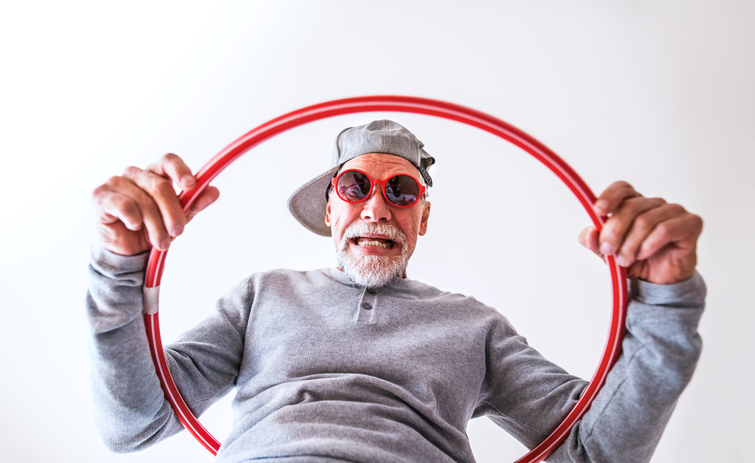
Which joints can be affected?
Osteoarthritis can affect individual joints individually (localised osteoarthritis) or three or more joint groups at the same time (generalised osteoarthritis). Affection of individual joints has a specific name according to the localisation and represents a separate disease.
Interesting:
Arthrotic changes in the spine (spondylarthrosis), which cause kyphosis (hunching) and necrosis of the vertebral body, are called Scheurmann's disease. This disease mainly affects children in adolescence. Up to 10% of the population, more often boys, are affected.
The knees (called gonarthrosis) and hips (called coxarthrosis) are most commonly affected. The knees and hips are weight-bearing joints, which is why they are preferentially damaged.
Localised osteoarthritis
- spondylarthrosis means degenerative changes in the cartilage of the intervertebral joints
- coxarthrosis is a term involving changes in the cartilage in the hip region
- gonarthrosis is a term for arthritis of the cartilage of the knee joints
- hallux valgus is arthrosis of the joint at the big toe. bunion
- rhizarthrosis refers to degenerative changes at the root joint of the thumb of the upper limb
- Heberden's nodes are degenerative changes in the distal joints of the fingers of the upper limb
- Bouchard's nodes represent arthritic damage to the proximal joints of the fingers of the upper limb
Generalized osteoarthritis
- Polyarthritic syndrome is an umbrella term for arthritic changes in the large joints (knee, hip, elbow, shoulder), small joints (fingers and toes) and the spine simultaneously
Osteoarthritis can affect various joints in the body

What happens inside the cartilage?
The development of arthrosis goes unnoticed, sometimes for decades before it starts to manifest itself externally. The initial changes taking place in the cartilage are only at the level of metabolism.
Due to the influence of cytokines, anabolic processes are suppressed. Because of this, catabolic, destructive processes predominate. Over time, this causes damage to the bone matrix (the underlying bone mass).
The damaged articular cartilage thins and erosions and fissures form on it. The articular cleft narrows, the joint plates become uneven (asymmetrical). These changes may not yet be externally apparent and the body compensates well initially.
Subsequently, sclerotization of the subchondral part of the bone below the joint occurs. The bone loses its protective cover. The unprotected bone responds to the increased load by enlarging.
The joints and bone ends are deformed, stiff, with little mobility and pain.
Stages of osteoarthritis
| Stage | Pathophysiology |
| Stage I | Metabolic changes, thinning of cartilage and progressive narrowing of the joint space |
| Stage II | Stage I progression, uneven articular surfaces and sclerotization of regional bones |
| Stage III | progression of stages I and II, formation of osteophytes, osteosclerosis, osteoporosis |
| Stage IV | complete disappearance of the articular cleft, significant deformities, pathological position of the joints |
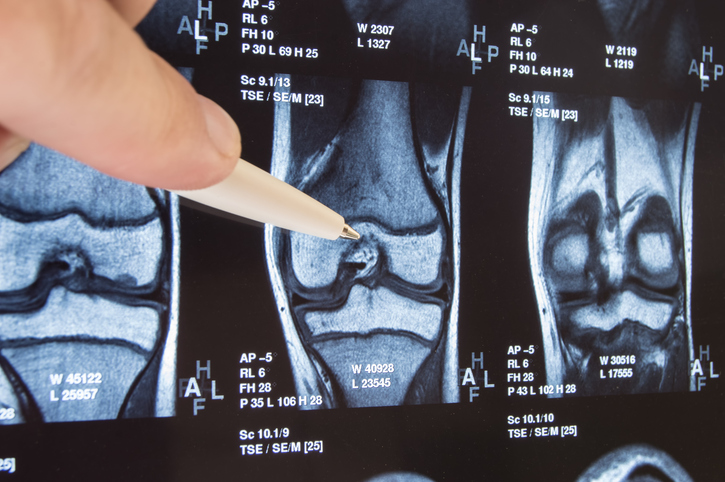
Living with arthrosis. What limitations does it cause?
In the early stages, arthrosis does not manifest itself outwardly. It can be observed on X-ray images at the time of narrowing of the joint space. However, in later stages, the patient may be limited in normal daily activities even with minor movements.
Another complication is uncomfortable pain.
Mobility disorders make daily activities impossible
Arthrosis is characterised by morning stiffness, which eases after waking up and moving around. As the disease progresses, it becomes more uncomfortable and more pronounced. In addition to stiffness, joint instability, axis misalignment and thus limitations in movement are caused by deformities in the joints.
In gonarthrosis, for example, patients have problems with walking up stairs, and in spondylarthrosis with bending and posture.
The pain not only limits us, but also makes us feel worse.
In the early stages of the disease, the pain is only mild. It is not constant and usually occurs with increased physical activity or excessive stress on a particular joint. In spondyloarthritis, the pain is localised in the back, most often in the sacral region.
Later, the pains are jolting, not only during activity, but also in periods of rest. They increase in spring and autumn.
What precautions should be taken?
- physical activity, rehabilitation
- limiting inappropriate activity and excessive stress on the joints
- reduction of excess weight in obese patients
- massage
- healthy diet
- appropriate dietary supplements
- medication or surgery, if necessary
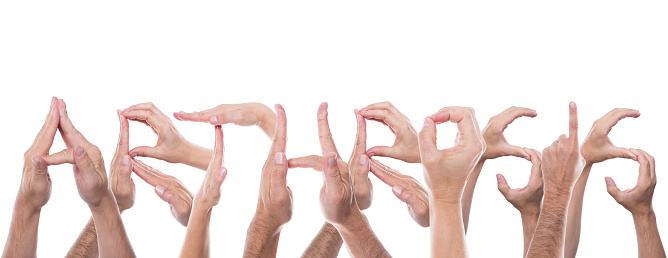
A healthy diet and lifestyle can delay the onset of arthritis
A diet rich in vitamins and minerals is important for the proper functioning of the body. A deficiency or even an excess of a substance can cause health problems.
Sufficient physical activity and a healthy lifestyle also pay off later in life.
A miracle called collagen keeps joints healthy
Collagen is a protein that is insoluble in water. It is an essential building block of supporting tissues. It binds cells together and shapes tissues, giving them a certain form (structure). Among other things, it ensures the integrity of muscles, bones and joints. Thus, it is indispensable for their proper function.
It accounts for up to 40% of joint mass.
As a dietary supplement, collagen promotes the regeneration and integration of articular cartilage. It strengthens the joint capsule, thereby strengthening the joint overall. A sufficient amount of collagen improves joint mobility. A lack of collagen, on the other hand, can cause musculoskeletal problems and later arthritis.
The importance of body weight and exercise in the prevention of arthritis
Obesity is one of the risk factors for osteoarthritis. Excess weight, especially in the morbidly obese, puts a strain on the joints (mainly weight-bearing joints). This primarily concerns the knee joints and the subsequent development of gonarthrosis.
Also frequent are spondylarthrosis due to violation of the spinal axis.
What are today's treatment options for arthritis?
Treatment of arthritis varies for specific patients based on the degree of the disease, as well as other factors such as the cause of the disease itself, associated diseases, the age of the patient, the general condition of the patient, and others.
It is an unfortunate fact that in some cases the patient's own economic situation and financial capacity play a significant role.
Alternative medicine
Treatment of arthritis by alternative means can be effective. It can help to overcome certain symptoms, such as pain. But it works only temporarily, in the early stages. In later stages, it is ineffective. For patients hoping for its positive effects, it can delay the start of reliable, medical treatment, or the need for surgery.
Alternative methods include, first and foremost, a change in diet (fish, cartilage meat) and lifestyle (exercise, exercise). Dry heat is applied to painful areas, or herbal compresses (nettle is best) are applied.
There are also homeopathic preparations on the market to relax the muscles near the diseased joint.
Treatment of arthritis with drugs
Analgesia is a necessity in painful conditions such as osteoarthritis. The first-choice drug is paracetamol, recommended by the European Society of Rheumatology. The daily dose should not exceed 3 g and the single dose 650 mg. Acetylsalicylic acid or a combination of the two is also suitable.
Painkillers can also be used in the form of patches.
Corticosteroids and hyaluronic acid are administered intra-articularly. In the treatment of arthrosis, preparations containing glucosamine sulphate, chondroitin sulphate, diacerhein (rhubarb extract), ASU (avocado and soybean oil extract stimulate collagen synthesis) or collagen peptides are also used.
Stem cell treatment
Stem cell treatment for arthritis is a medical breakthrough. It is a treatment method that uses the body's own stem cells from the adipose tissue, where they are most abundant. These have regenerative effects, i.e. the ability to repair themselves, which is essential in a damaged and worn-out joint.
This therapy is usually indicated for patients with stage I and II arthritis up to the age of 75. In older and polymorbid patients or at higher stages it is possible, but only provides a temporary improvement in the condition.
Surgical debridement and articular cartilage transplantation
In milder stages of osteoarthritis, it is possible to align and trim the cartilage to a smooth surface. This achieves a smooth glide of the articular surfaces, which is important for movement.
Articular cartilage transplantation (osteochondral transplantation) is a surgical procedure. Cartilage from the unloaded part of the joint is transferred to the damaged joint area. It is practised for severe damage.
Joint replacement - artificial implant
Total joint replacement is indicated exclusively by an orthopaedic surgeon for patients with severe joint damage and deformity, mainly in the higher stages of osteoarthritis, when mobility is severely restricted.
The replacement of the damaged joint with an artificial implant is called an endoprosthesis.
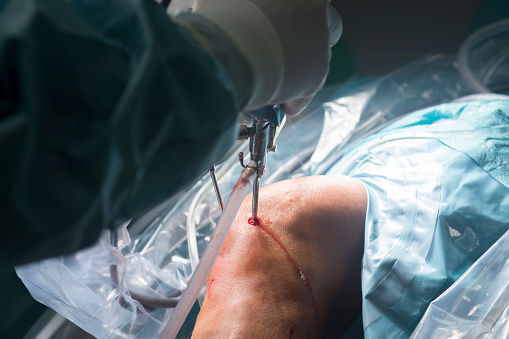
Complementary and highly effective methods
In addition to the treatment procedures themselves, there are also complementary treatments. These are most effective when used in conjunction with the primary therapy itself. By combining these two therapeutic methods, patients can achieve a faster onset of effect and also multiply the resulting effect.
Professional, relaxing and relaxing massages
Massage is a part of mechanotherapy. The name comes from the Arabic word masa, which translates to touch or feel. In Latin, it means dough. The aim of massage is to use the movements of the fingers and hands, which the masseur applies directly to the affected (painful) parts of the body. This irritates the peripheral nerves and relaxes the stiff muscles. In arthritis, this relieves pain.
Rehabilitation exercises
Rehabilitation uses exercises and physical movement as a means of preventing and also treating certain diseases. It is a complex process, and regularity of rehabilitation is important. It is particularly important in the treatment of arthritis. Regular activity prevents stiffening of muscles and joints, thus facilitating movement and relieving pain.
Exercises for arthrosis must be careful, taking into account the most affected areas to avoid excessive overload.
Meaningful occupational therapy
Occupational therapy is a sub-category or component of rehabilitation exercises. The occupational therapist's job is to engage the patient in a way that is meaningful to them. It involves using their abilities in activities of daily living and other lighter activities. The goal is to increase both fine motor skills and overall activity, movement coordination and sensitivity in people with varying degrees of disability.
The healing effects of water
Water therapy, or hydrotherapy, has been known since ancient times, and was already well known to the ancient Greeks and Romans. Its positive effects are still used today. Nowadays, it is a part of physical therapy that uses the effects of water, its healing effects, as well as its temperature on the human body.
Water therapy has a positive effect on several systems. In the treatment of arthritis, its influence on the proper functioning of the nervous system and its thermal effects on muscle relaxation are the most positive.
Electric current has a positive effect on the treatment of painful conditions
Electrotherapy is the treatment with an electric current using special equipment. Like hydrotherapy, it is part of physical therapy. It is only practised in rehabilitation centres. Its principle is nerve stimulation by alternating electric currents.
It improves blood circulation in tissues, relieves pain and inflammatory processes, relaxes and regenerates muscles.
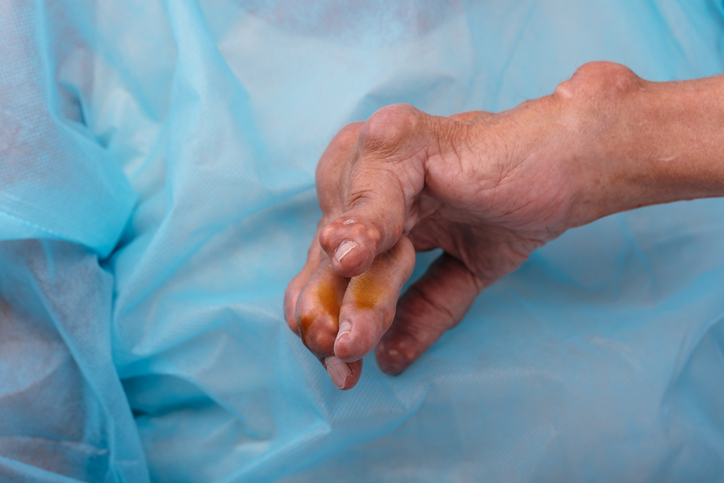
Diet in osteoarthritis patients
Proper diet in a patient with osteoarthritis is more important than it might seem at first glance. Even in drug therapy, some substances contained in food are used.
An overview of foods containing important substances for the treatment of osteoarthritis
| element | Description | effect in the fight against arthrosis | raw material sources |
| glucosamine | monosaccharide | essential component of cartilage reduction of pain improving joint function positive changes in joint structure | dietary supplement |
| chondroitin sulphate | heteropolysaccharide | affects chondrocyte metabolism stimulates collagen production prevents catabolic processes anti-inflammatory | animal cartilage pig ears pig snout |
| collagen | natural collagen | basic building material in the body | bovine cartilage pork cartilage chicken cartilage |
| collagen hydrolysate | collagen peptide (obtained by cleaving gelatin) | collagen synthesis in the small intestine reduction of joint pain | pork rind skin grafts bones |
| manganese | essential trace element | transport of collagen in the body | Cereals nuts leafy vegetables teas |
| boswellic acids | resin extract | reduces joint pain reduces joint stiffness | Indian tree (Boswellia serrata) |
| MSM | an organic compound containing sulphur | source of organic sulphur | various fruits various vegetables horsetail |
| vitamin C | vitamin, essential substance | collagen synthesis elastin synthesis synthesis of bone mass | leafy vegetables strawberries, arrows, sea buckthorn sauerkraut |
The onset of osteoarthritis later in life can lead to permanent disability and pain. Therefore, it is important to think about this during young adulthood and live a healthy lifestyle.
Preventive measures delay its onset and help to maintain a full life for as long as possible.
Interesting resources










